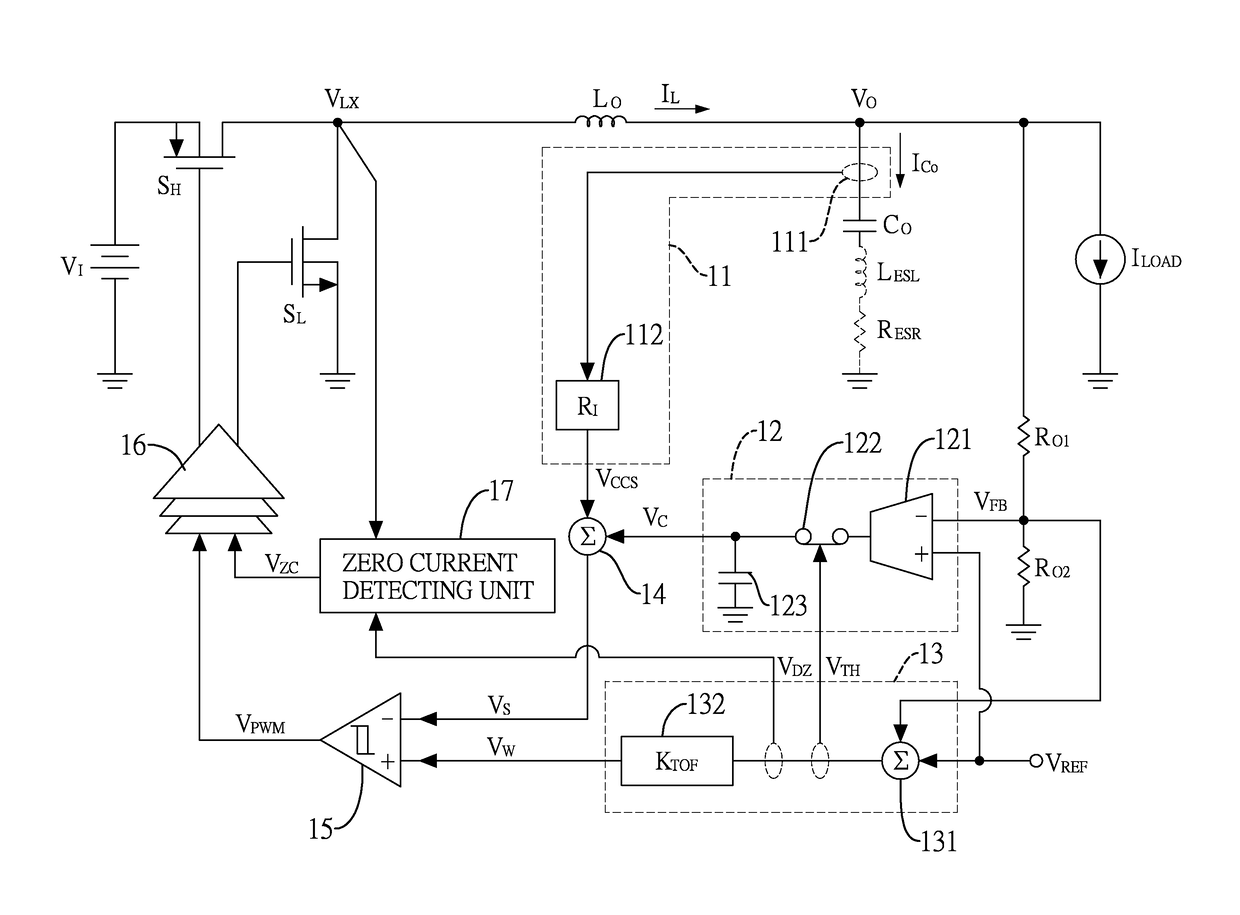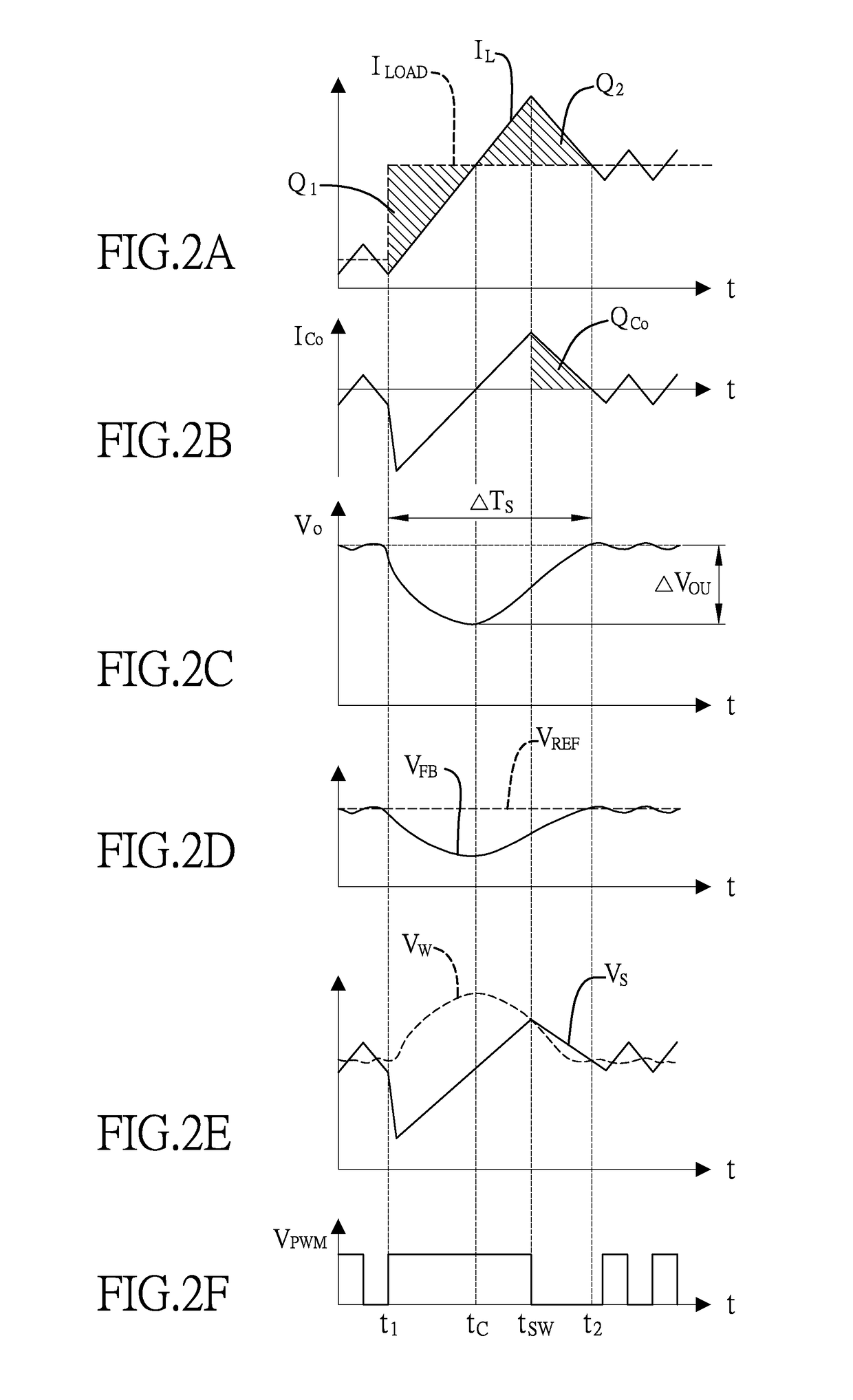Buck converter with a variable-gain feedback circuit for transient responses optimization
a feedback circuit and variable-gain technology, applied in the field of buck converters, can solve the problems of degrading the signal-to-noise ratio (snr) performance of noise-sensitive circuits, reducing system reliability, and so as to achieve the effect of increasing chip area and power consumption
- Summary
- Abstract
- Description
- Claims
- Application Information
AI Technical Summary
Benefits of technology
Problems solved by technology
Method used
Image
Examples
Embodiment Construction
[0028]Reference will now be made to the drawing figures to describe the present disclosure in detail.
[0029]FIG. 1 shows a buck converter with a variable-gain feedback circuit for transient responses optimization. The buck converter includes a power stage circuit and a control circuit. The power stage circuit with an input side and an output side includes a pair of switches SH,SL, an output capacitor CO, and an output inductor LO. The switches SH,SL include a high-side switch SH and a low-side switch SL, both are electrically connected to an input voltage VI, which is a direct current (DC) voltage at the input side. In this example, the high-side switch SH is, but not limited to, a P-type MOSFET switch and the low-side switch SL is, but not limited to, an N-type MOSFET switch.
[0030]The output capacitor CO is electrically connected between the output side and a ground. In particular, the output capacitor CO is modeled with its parasitic inductance LESL and parasitic resistance RESR. T...
PUM
 Login to View More
Login to View More Abstract
Description
Claims
Application Information
 Login to View More
Login to View More - R&D
- Intellectual Property
- Life Sciences
- Materials
- Tech Scout
- Unparalleled Data Quality
- Higher Quality Content
- 60% Fewer Hallucinations
Browse by: Latest US Patents, China's latest patents, Technical Efficacy Thesaurus, Application Domain, Technology Topic, Popular Technical Reports.
© 2025 PatSnap. All rights reserved.Legal|Privacy policy|Modern Slavery Act Transparency Statement|Sitemap|About US| Contact US: help@patsnap.com



